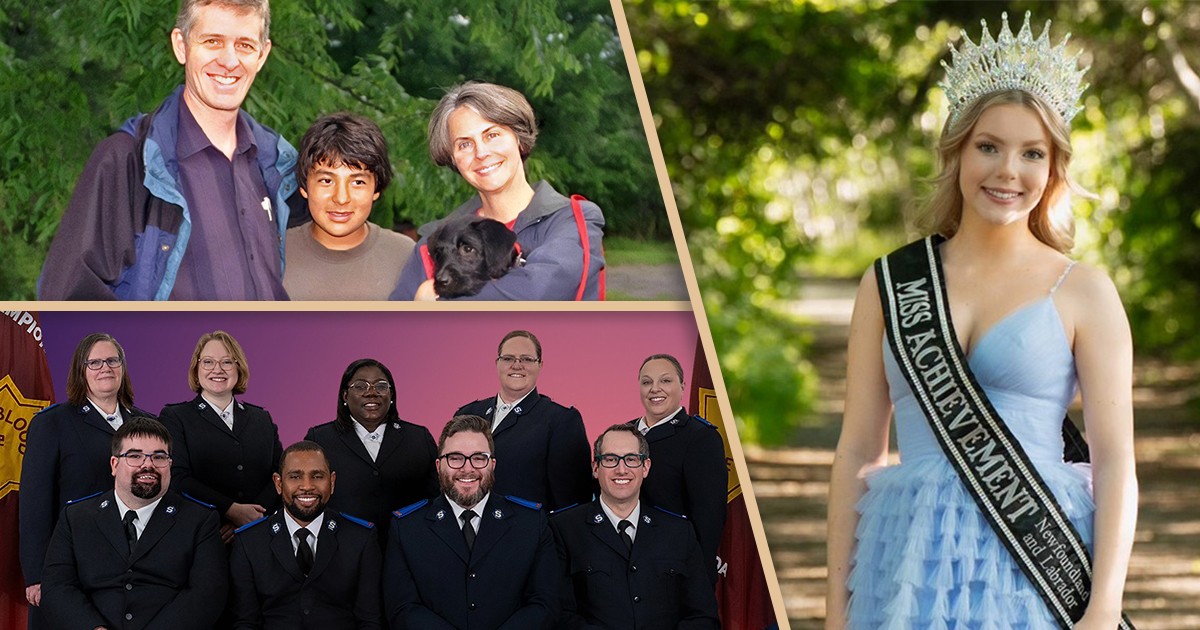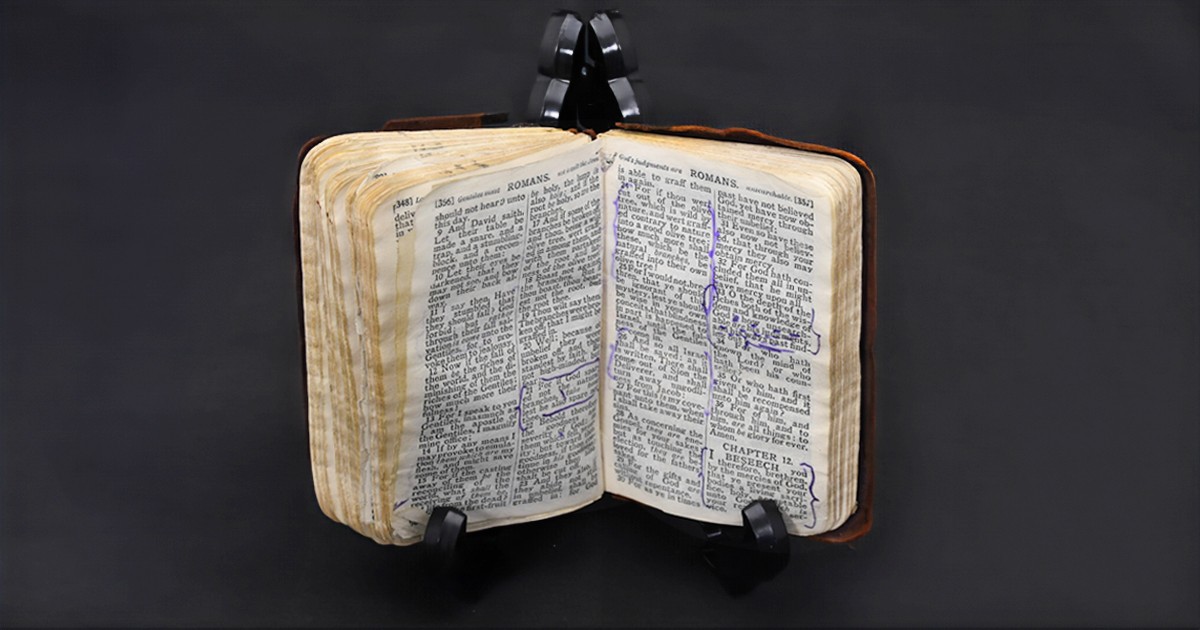(Above) From left, Bert Osmond; Mjr Patricia Kennedy, CO, Oshawa Temple, Ont.; Everett Shepherd; Mjr Tony Kennedy, CO, Oshawa Temple, Ont.; and Pauline Pardy, corps member and organizer, prepare meals in Channel-Port aux Basques, N.L. (Photo: David Harvey)
When hurricane Fiona hit eastern Canada on September 24, 2022, it devastated the coastline, affecting communities in Nova Scotia, Prince Edward Island and Newfoundland and Labrador. Houses, sheds and other property were ripped from their foundations, and boats and debris were pushed ashore.
“Some have said that the hurricane was like a bomb dropped,” says David Harvey, corps leader in Channel-Port aux Basques, N.L. “But actually, that doesn’t do it justice. We had several corps members who lost their homes and were living in hotels.”
“For one family, the hurricane went in the front door and out the back, and took everything with it,” adds Beverley Harvey, corps leader, Channel-Port aux Basques.
Shelter, food and emotional care were immediate needs. The Salvation Army in both theNewfoundland and Labrador Division and the Maritime Division responded quickly, setting up warming centres in affected communities and surrounding areas, serving food and drinks, and providing a consistent source of compassion and goodwill to those in need.
Newfoundland and Labrador

The town of Port Aux Basques has a memorandum of understanding (MOU) with The Salvation Army that, in the event of an emergency, the Army will provide food services.
But when the Army received a call that the Red Cross could not reach the town for two days due to road closures and damage to infrastructure, they were ready to step in immediately to operate a warming centre and shelter, as well.
“The streets were flooded and people were scrambling. We knew that we had to go into action and help wherever we could,” says Beverley Harvey.
With the corps located further inland, residents of Port aux Basques could go there for shelter, warmth and food. The shelter was activated at a local school.
“Our cooks and volunteers all came together to start serving meals,” says David Harvey. “That was our initial response—to get people up, get them into a place that’s comfortable and warm, where they can chat and have a sense of community amidst the disaster going on. We were serving up to 800 meals per day.”
In addition, emergency vehicles and Salvation Army teams from Port aux Basques and Corner Brook were dispatched to the coast to serve and assist the Canadian military and rangers on site.
With more than 100 homes destroyed by hurricane Fiona in Newfoundland and Labrador, the need did not end with the storm. Now, many residents must endure the long process of rebuilding while facing the emotional toll of the aftermath.
“Your house is right there, you can see it, but you can’t live in it anymore. For a lot of people, these are century-old homes, they are homes that have been in their families for years,” explains Steven Hynes, divisional director of emergency disaster services, Newfoundland and Labrador Division.
“When we were down on the waterfront and talking to individuals, there was always an opportunity to speak into someone’s life,” says David Harvey, who spoke to one man after the storm whose house had only lost one piece of siding, while his neighbours’ homes had been destroyed. He felt guilty and did not want to stay. Others visited the warming centre at the corps and would break down crying, just looking to talk with someone and pray.
“The biggest part right now is that sense of community. The response that the volunteers in Port aux Basques gave and continue to give is incredible. This is their home and there wasn’t amoment where they weren’t prepared to help the community,” says Hynes. “The people of Port aux Basques have shown their strength and it doesn’t go unnoticed.”
“The community really came together to help each other—to clean each other’s yards, to pickup debris. Suddenly, every community and every person was involved,” says Beverley Harvey. “I wouldn’t say it’s getting back to normal, but it is a new normal for them. For this season, there is a feeling of hope. And they have seen that hope in action.”
Nova Scotia
A few days before the hurricane hit the Maritimes, the mayor of Sydney called The Salvation Army to request shelter help for the large population of unhoused individuals during the storm. “Our role was to provide food to the local shelters that had been set up by our partners, many of which were over capacity,” says John Bignell, emergency disaster services specialist, Maritime Division.

As the storm grew closer on Friday, there were operational sites in Cape Breton, including Sydney and Glace Bay, in Westville, and at four sites in Halifax that served as evacuation routes. With seven kitchens running in corps across the division, volunteers focused on safely delivering hot meals to communities in need.
Many families had purchased groceries in preparation, believing that they may not be able to access grocery stores and banks during the storm. But once hurricane Fiona hit, they lost power, the food they had stocked, and the money spent on preparations.
“People were just waiting for the next paycheque,” says Bignell. “But now they need that money to rebuild. And some don’t have the means to rebuild—maybe they went into their savings to get their power back on, or they are taking on credit card debt to buy groceries. They are struggling. In areas with low-income housing and families on fixed incomes, the need hasn’t gone away.”
Halifax residents and lifelong Salvationists Dave and Donna Watts volunteered as part of The Salvation Army’s response to the hurricane in Glace Bay. Though they lost power in their own home for 24 hours, they were focused on getting out and helping others.
“We are both active volunteers at the corps and with emergency disaster services,” says Dave Watts. “We started at the Halifax warming centre on Sunday, one day after the hurricane hit. We were preparing meals and travelling back and forth from the corps to serve them.”

On Monday, the Watts drove the communityresponse unit (CRU) to the Sydney location for an expected three-day deployment in the areas hardest hit by the storm. The deployment lasted nine days. “Meals were cooked on a gas stove in a kitchen that was unlit as there was no power in the building. Many hands prepared mini pizzas on that first night,” says Watts.
In the days that followed, the Watts transferred to Glace Bay to assist corps officers Captains Charlene and Keith Barrett in cooking and delivering meals. Over the course of an hour and a half, the team of volunteers served up to 150 meals. People came on foot and by car to the CRU, expressing appreciation for the help of The Salvation Army.
“There were people who came by just for a cup of coffee because they couldn’t make it at home and needed the comfort of a warm drink. Some would stand outside and tell us about their homes and the feelings they had about the damage. They were just thankful for a prepared meal and someone to chat with,” says Watts.
“Most days were long—about 15 hours,” he continues. “But there were moments of lightheartedness. The people in the kitchen at Glace Bay Corps worked tirelessly, many having suffered their own losses at home, and did so with smiles and laughter. Volunteering can be a joy!”
With reporting by Kristin Ostensen.










Bert, Everett and Pauline are such great volunteers. And there were many others with the Corps leaders, Bev and Dave Harvey...sacrifically serving others in very difficult circumstances.